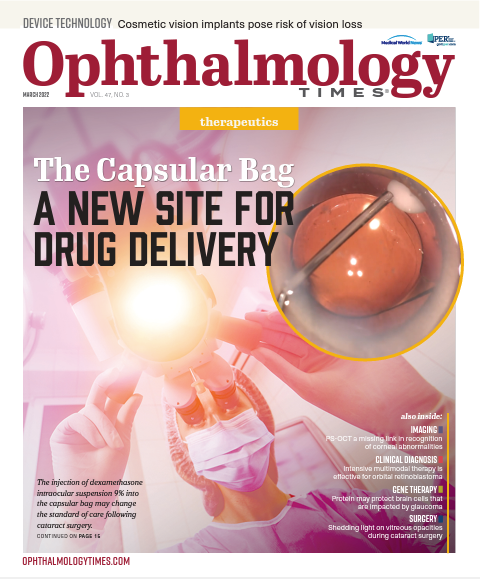Publication
Article
Digital Edition
Study focuses on potential biologic to treat allergic eye disease
Author(s):
A team of investigators has found that nomacopan, a recombinant biologic derived from blood-feeding ticks, may be an option for the treatment of allergic eye disease due to its ability to down-regulate the LTB4/C5 pathways in experimental allergy conjunctivitis.

A team of investigators, led by Malihe Eskandarpour, MSc, from Ocular Immunology Group, University College London Institute of Ophthalmology, London, has reported that nomacopan (Akari Therapeutics), a recombinant biologic derived from blood-feeding ticks, may be a potential treatment for allergic eye disease due to its ability to down-regulate the LTB4/C5 pathways in experimental allergy conjunctivitis (EAC).1
The drug is a second-generation complement inhibitor with dual activities, ie, it acts on complement component C5 and prevents release of C5a and formation of C5b-9 as well as inhibits leukotriene B4 (LTB4) activity, both of which are part of the immune/inflammatory response.
Nomacopan seems to have the potential to fill a gap in the treatment of sight-threatening vernal keratoconjunctivitis in children, which generally is treated with steroids.
Investigating the inflammatory cascade
The investigators conducted a study to determine how LTB4 and complement C5 contribute to an EAC model. They explained that EAC is a model of allergic eye disease that is primarily driven by effector Th2 cells and mast cells. During EAC, conjunctival inflammation is detectable by 5 days and shows elevated levels of conjunctival interleukin (IL)-9-expressing CD4+T cells and mast cells in tissues and cells expanded from conjunctival explants.
Moreover, the investigators observed significantly increased levels of tryptase+ conjunctival mast cells that co-expressed intracellular IL-9 in the subepithelial area within the fornix of the conjunctival EAC tissues.
In mice with EAC treated with topical nomacopan, the disease was suppressed significantly and there was a decrease in IL-9-expressing CD4+T cells. Two studies2,3 reported previously that Th9 and Th2 cells produce IL-9.
According to Eskandarpor and the team of investigators, topical nomacopan attenuated conjunctivitis in EAC and decreased IL-9 in CD4+T cells.
“We concluded that IL-9 was up-regulated during vernal keratoconjunctivitis and EAC,” they wrote. “Nomacopan significantly suppressed EAC severity, accompanied by a decrease in IL-9-producing Th2 cells, Th2 cells, and to a lesser extent, Th9 cells, suggesting a key pro-inflammatory role for IL-9-secreting CD4+T cells in allergic eye disease. Our findings support nomacopan as a potential treatment for allergic eye disease due to its ability to down-regulate LTB4/C5 pathways in EAC.”
References
1. Eskandarpor M, Zhang X, Micera A, et al. Allergic eye disease: Blocking LTB4/C5 in vivo suppressed disease and Th2 & Th9 cells. 2021; https://doi.org/10.1111/all.15128
2. Micosse C, von Meyenn L, Steck O, et al. Human "TH9" cells are a subpopulation of PPAR-gamma(+) TH2 cells. Sci Immunol 2019; 4:1-13. 10.1126/sciimmunol.aat5943
3. Chang HC, Sehra S, Goswami R, et al. The transcription factor PU.1 is required for the development of IL-9-producing T cells and allergic inflammation. Nat Immunol 2010;11:527-34; https://doi.org/10.1038/ni.1867

Newsletter
Don’t miss out—get Ophthalmology Times updates on the latest clinical advancements and expert interviews, straight to your inbox.




